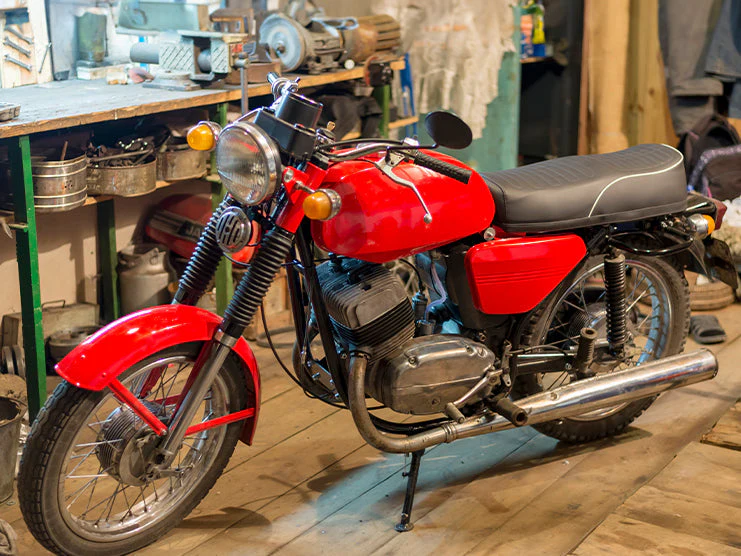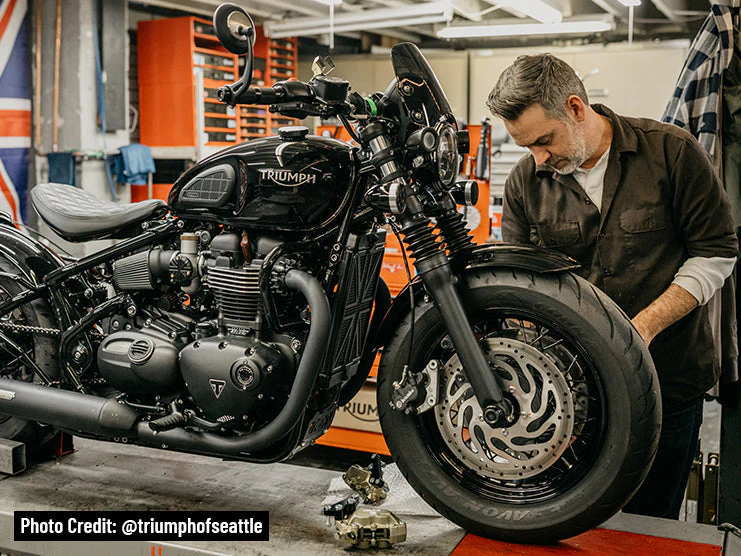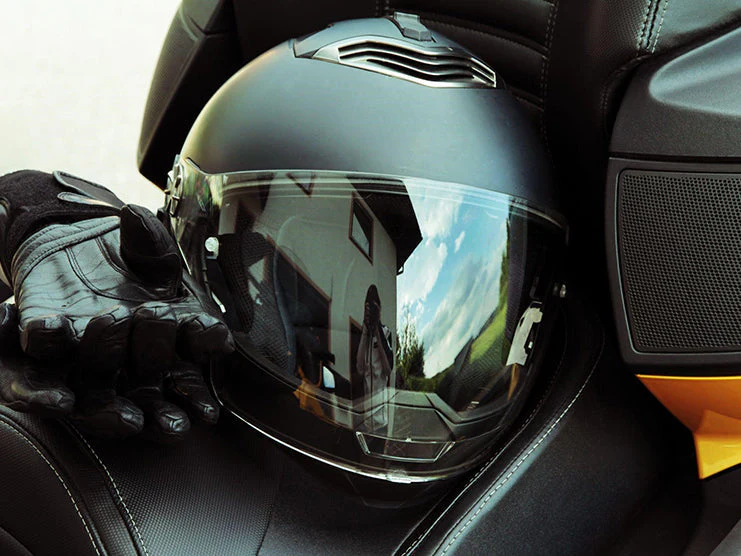Table of Content
Motorcycle manufacturers may not mention their motorbikes’ average life expectancy/ mileage on the spec sheets. Nobody can tell exactly how many miles a motorcycle will last. This is because several factors influence the average life expectancy of a motorcycle. Read this article to learn how many miles motorcycles last.
1. How Many Miles Do Motorcycles Last?
Several factors influence a motorcycle's lifespan, including:
1.1 Motorcycle Type
Each type of motorcycle has a different life expectancy. The lifespans can vary amongst the same models produced by the same motorcycle manufacturer.
Depending on their purpose and operation, motorcycles are categorized into the following groups:
Touring Bikes
Touring bikes are designed to ensure long-distance rides and touring. They are the most comfortable type of motorcycles fitted with pulled-back handlebars, and forward-mounted footpegs, ensuring laid-back ergonomics. Touring bikes can last more than 40,000-50,000 miles on average. You can also make them last more than 100,000 miles by following the service intervals regularly.
If you own a cruiser and you want to transform it into a touring bike, you can easily do it by installing a few aftermarket parts, including crash bars, fairings, sissy bars, sissy bar pads, touring-oriented handlebars, and comfortable seats available at Viking Bags. These modifications ensure better performance and look of your motorcycle.
Cruisers
Cruisers are the most common type of motorcycles, highly popular among U.S. riders due to being comfortable and touring capable. They are not designed for quick and adventure rides due to which they last longer than other types of motorcycles. On average, they can last longer than 40,000-50,000 miles if kept well-maintained.
Dual Sports and Adventure Bikes
Adventure and dual sports bikes undergo extreme wear and tear due to being used for adventure riding and maneuvering on dirt trails and tough terrains. However, they are not as dirt-oriented as the enduros and dirt bikes. Though they are heavyweight and bulky motorcycles, most of the bodywork is made of plastic and flexible material. How long a dual sports or adventure bike lasts mainly depends on the type of use and your riding habits. If you use these motorcycles for extreme dirt trail riding, their lifespan will decrease. Dual sports and adventure bikes last around 75,000 miles if they are kept maintained.
Dirt Bikes
Dirt bikes are designed for off-roading only and they can maneuver on versatile off-road terrains. If you want to do extreme dirt trail riding, dirt bikes are the preferred option. They are extremely lightweight and are equipped with long-wheel travel suspensions, to ensure better off-roading. Due to being ridden in extreme dirt riding situations, dirt bikes last no more than 20,000 miles.
Sports Bikes
Sports bikes have comparatively shorter lifespans than cruisers and touring bikes due to being built for aggressive and fast rides. Sports bike engines have to work harder to produce more horsepower. On average, a sports bike only lasts between 25,000-50,000 miles.
Also Read: TOP 5 DIRT BIKE BRANDS IN 2022
1.2 Motorcycle Brands
How long a motorcycle lasts also depends on its brand. Out of all the motorcycle manufacturers, the Japanese motorcycle brands, including Honda, Yamaha, Kawasaki, and Suzuki, produce the motorcycles that last the longest. Their motorcycles are also less likely to break down, suffer mechanical issues, are easier to maintain, and have long service intervals.
Also Read: TOP 10 MOST RELIABLE MOTORCYCLE BRANDS
1.3 Usage
A rider’s expertise and riding habits can also determine a motorcycle’s average life expectancy. If you regularly ride your motorcycle for daily commutes and long-distance rides, it will wear out earlier than a motorcycle used for casual or weekend rides.
If you love to perform stunts, ride fast, and drift, the motorcycle parts, including the tires, engine, transmission, clutch, and brakes, will wear out quickly.
Experienced riders learn ways to keep their motorcycles in good condition, extend their lifespans, and travel more carefully. Meanwhile, inexperienced riders can damage their motorcycles due to their novice riding skills and improper use, resulting in a shorter lifespan.
1.4 Maintenance
The most effective way to ensure your motorcycle lasts longer and performs optimally is to maintain it at the recommended service intervals. Changing engine oil on time is the most crucial maintenance task to keep the engine running. The rider must regularly check the fluids, brakes, suspensions, battery, and other parts.
1.5 Lubrication
Motorcycles have several mechanical parts that require lubrication for smooth operation. The key motorcycle parts, including the engine, transmission, suspensions, and brakes, consist of moving parts, gears, and surfaces that slide against each other continuously to operate. If you do not lubricate these parts regularly, they will start to wear out quickly and impact your motorcycle’s longevity.
1.6 Storage
A motorcycle kept in storage without maintenance for a long time is likely to die earlier than a motorcycle in use. You can make a motorcycle last longer by keeping it in a storage space in good condition for a long period. However, the total number of miles will remain the same. An unattended motorcycle is likely to form rust in crucial areas, resulting in degraded performance and early wear and tear.
1.7 Cleaning
Besides being a part of maintenance, cleaning makes your motorcycle look new and ensures optimal performance. Cleaning your motorcycle means doing every part, including the exterior, engine, transmission, drive system, chain, sprockets, brakes, carburetors, fuel injectors, fuel tank, and suspensions. If you do not clean your motorcycle regularly, dust will accumulate which could cause poor performance and premature wear and tear.
1.8 Motorcycle Crash
It is difficult to return a motorcycle to its original shape after being in a crash. Even a small deformation in the motorcycle frame can affect the performance and longevity of every part. A motorcycle that has been in a crash will wear out sooner than a motorcycle that has never been in an accident. If you want to improve the longevity of a crashed motorcycle, make sure to do the necessary repairs and replace any damaged parts.
1.9 Motorcycle Part Replacements
Although keeping a motorcycle well-maintained is the best way to make it last longer, there is a limit to how long a motorcycle part can remain functional. Every motorcycle part has an individual service life and must be replaced after reaching the end. Repairing an old part instead of replacing it can potentially damage other parts connected to it. For example, if you do not replace a damaged air filter, this will eventually cause damage to the engine.
1.10 Weather Conditions
Extreme weather conditions can also impact your motorcycle’s longevity. Motorcycles are designed to operate in nominal weather conditions. Extreme hot and cold temperatures can cause the viscosity of the fluids to change. Extremely windy weather can cause dust and debris to accumulate in vital parts and performance to degrade. Exposure to harsh sunlight and intense heat can cause damage to the motorcycle paint and chrome, resulting in early wear and tear.
2. How to Make Your Motorcycle Last Longer?
The more effort you put into keeping your motorcycle clean and maintained, the more miles it can travel before breaking down. Follow the steps below to improve your motorcycle’s longevity:
- Ride safely, smoothly, and slowly
- Avoid riding aggressively
- Avoid performing stunts
- Follow the maintenance schedule
- Store your motorcycle in a safe space
- Do not park your motorcycle under the sun for long
- Dry your motorbike after washing
- Keep the motorcycle parts lubricated
- Change the fluids when required
- Perform regular inspection
- Check tire pressure before every ride
- Deep clean your motorcycle regularly
- Replace damaged motorcycle parts when required
- Avoid riding in extreme weather conditions
3. Frequently Asked Questions (FAQs)
3.1 How Long Do Motorcycle Engines Last?
Taking into account the various factors that can impact a motorcycle engine’s performance and longevity, it can last between 50,000-250,000 miles.
Also Read: HOW LONG DO MOTORCYCLE ENGINES LAST
3.2 Why Do Motorcycle Tires Wear Out Faster Than Car Tires?
Motorcycle tires differ in shape and construction from car tires. They are built from softer materials and have a narrower contact patch to help with cleaning and maneuverability. They are softer so their shape can adjust against the surface of the road while leaning or turning a corner. However, their soft construction causes them to wear out faster than car tires.
3.3 Do Motorcycles Lose Power Over Time?
Much like how humans have less energy as they grow older, motorcycle engines start to produce less power the longer it is in use. The constant friction and excessive heat produced in the engine cause wear and tear, resulting in power loss over time.
4. The Bottom Line
One cannot accurately predict how many miles a motorcycle will last as even two of the same model from the same motorcycle brand can have different life expectancies. Several factors impact a motorcycle’s lifespan, including the type of motorcycle you ride, how you ride it, its brand, your riding habits, and how well you maintain it. Other external factors can also reduce a motorcycle's performance and lifespan, including extreme weather conditions and damage due to a motorcycle crash. However, you can make your motorcycle last longer by following the tips mentioned in this article.













Leave a comment
All comments are moderated before being published.
This site is protected by hCaptcha and the hCaptcha Privacy Policy and Terms of Service apply.